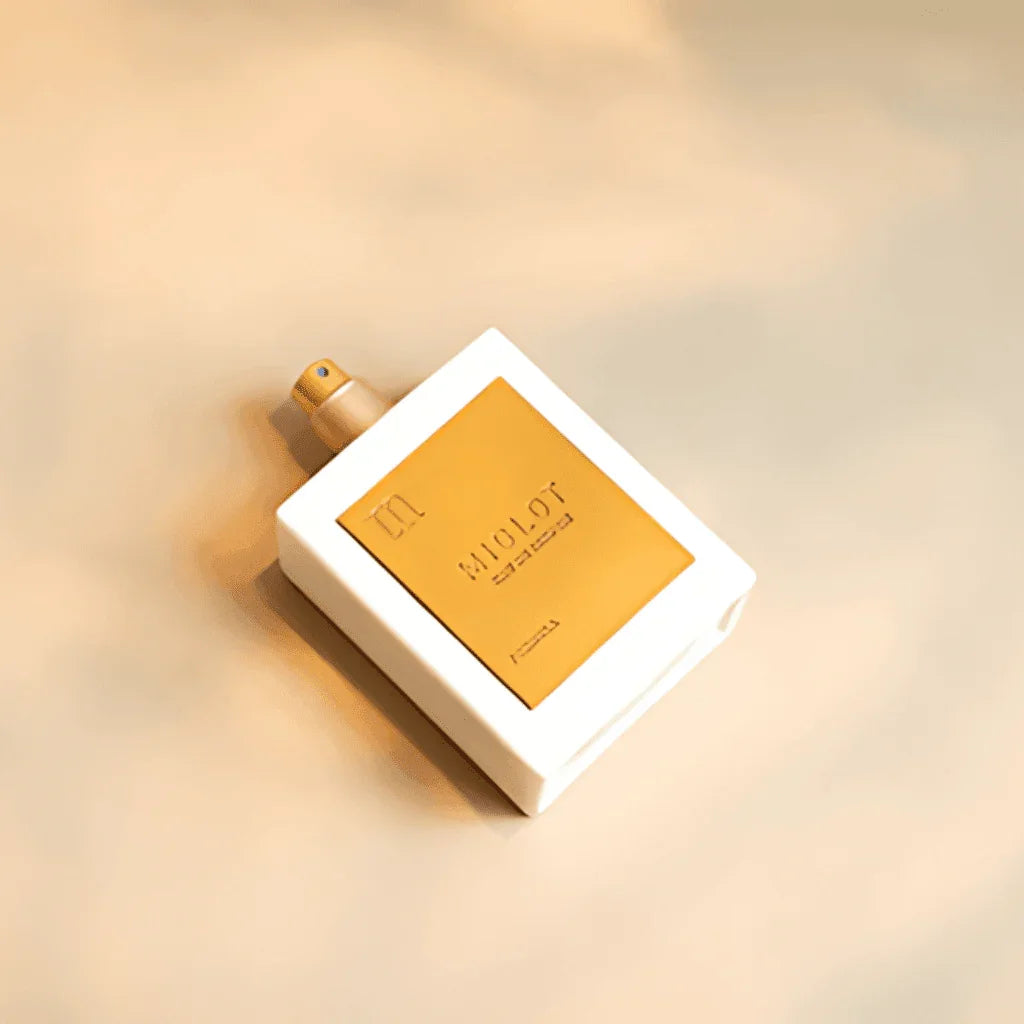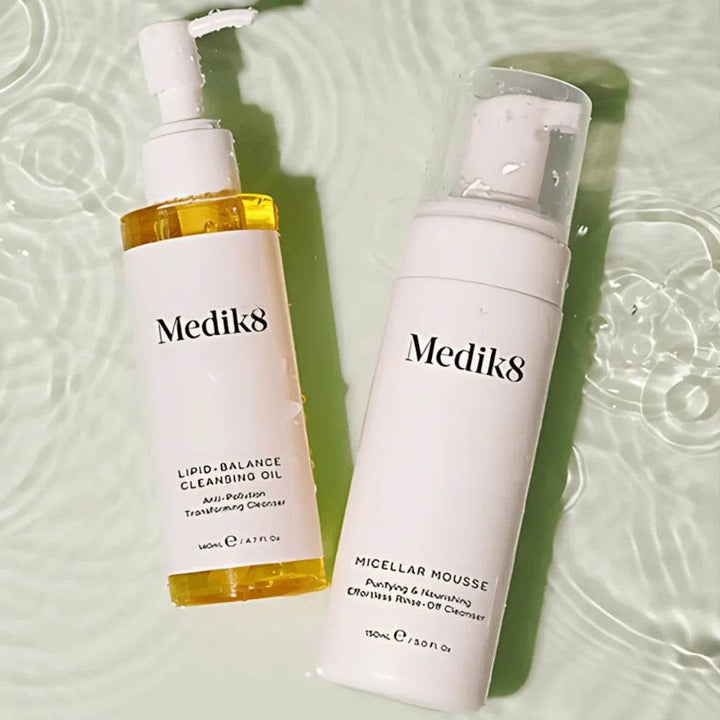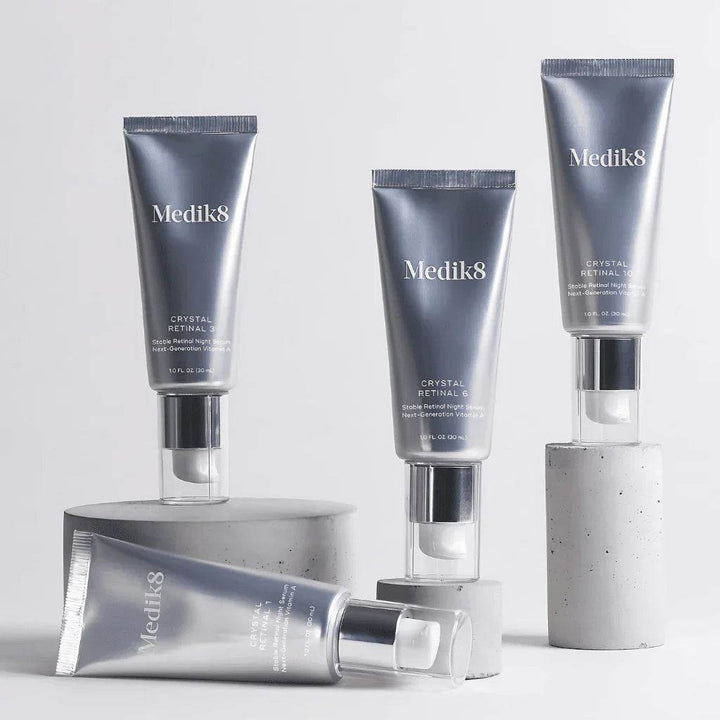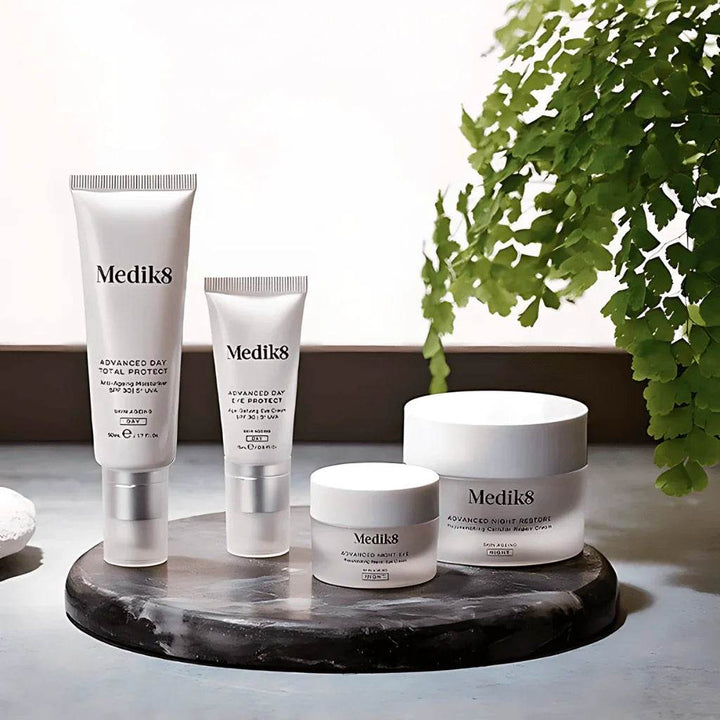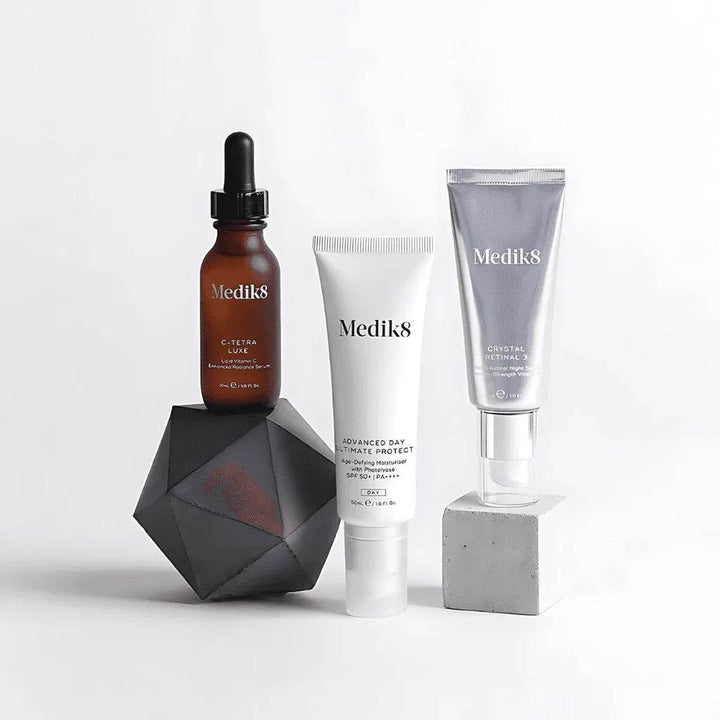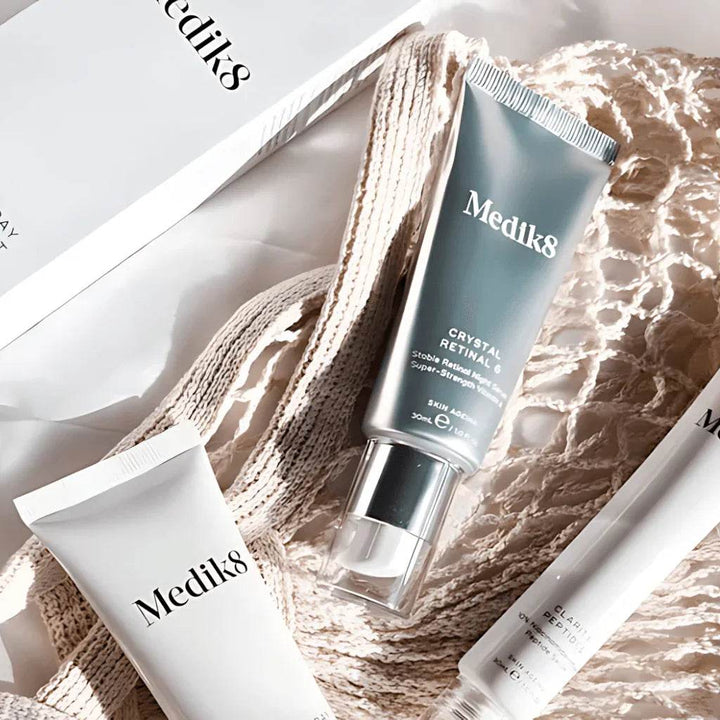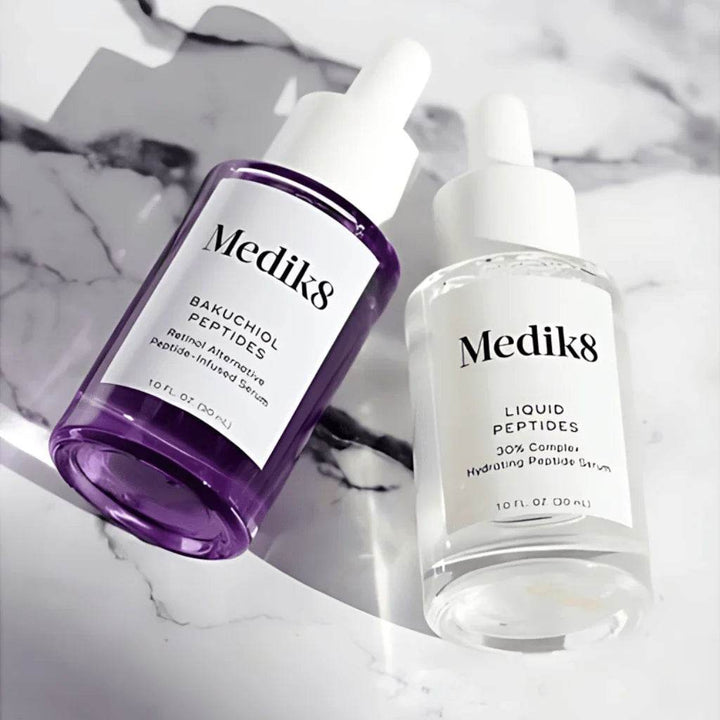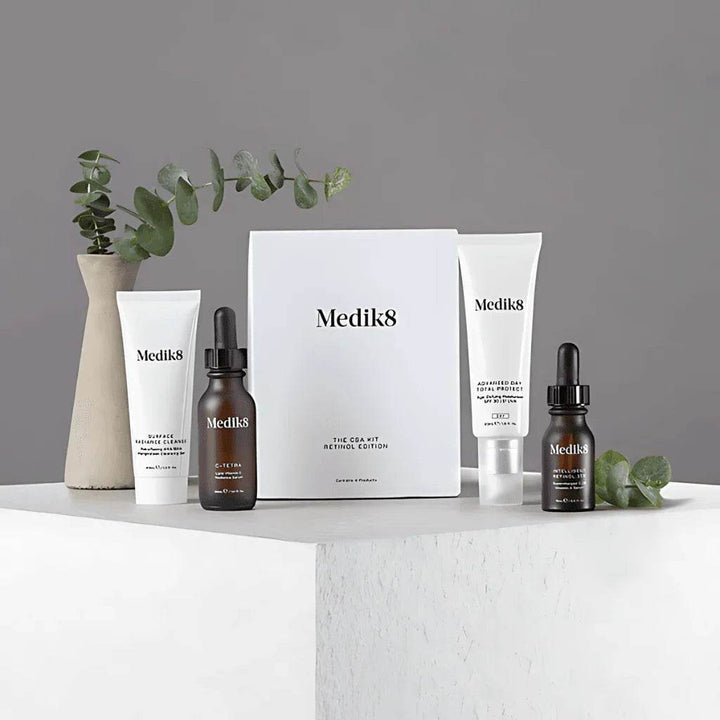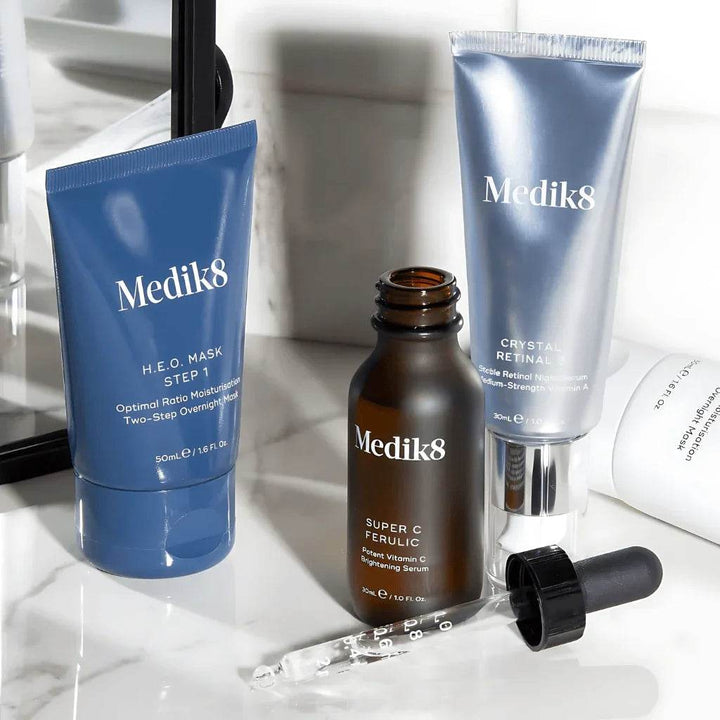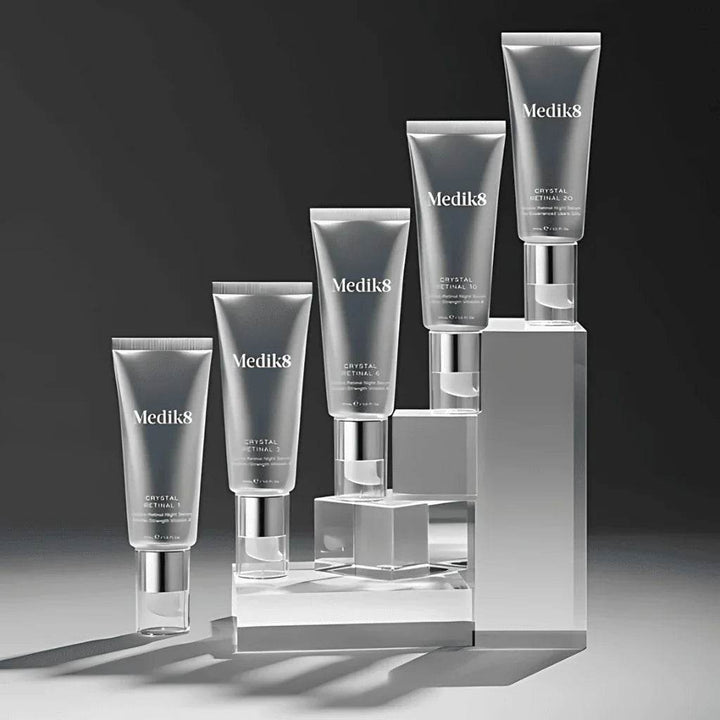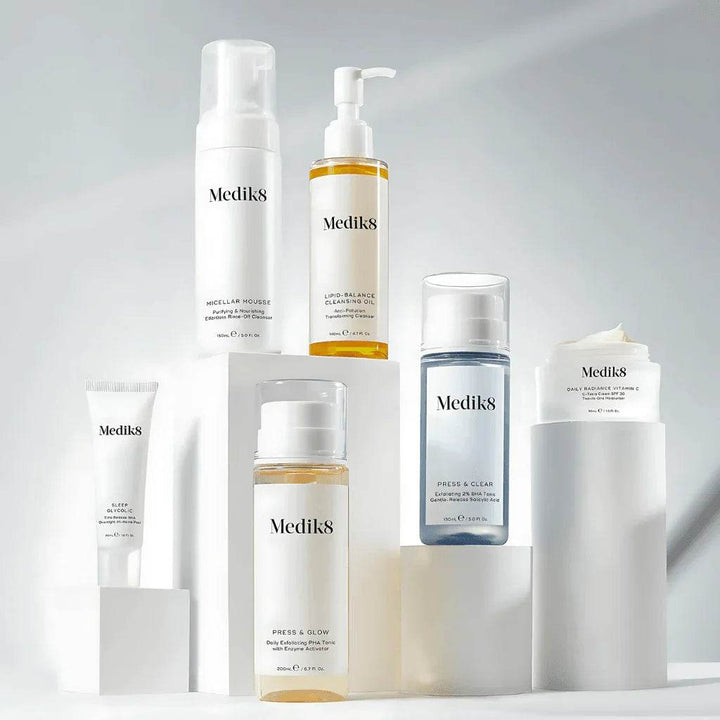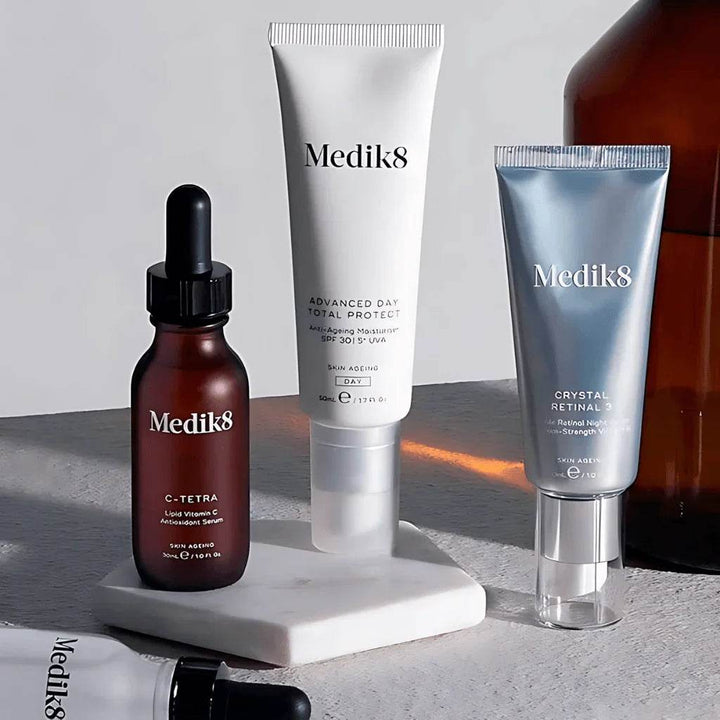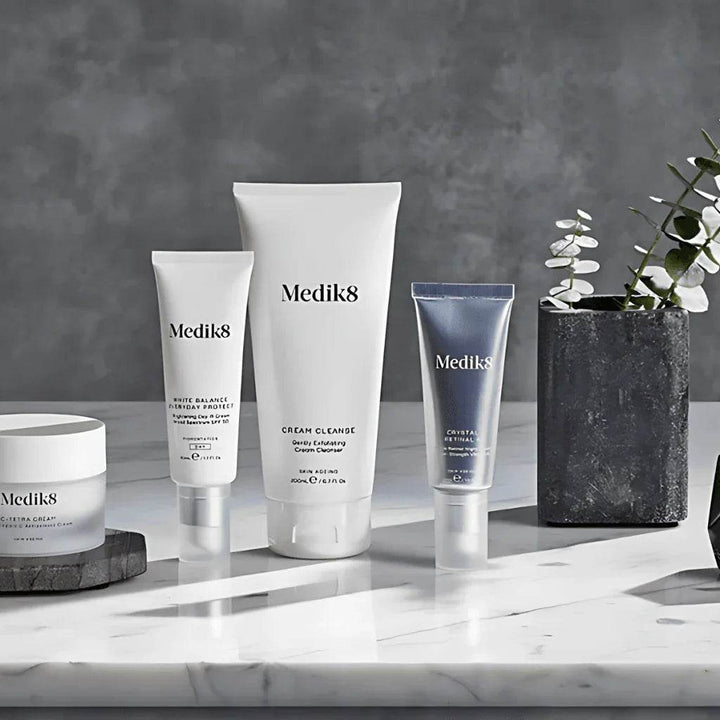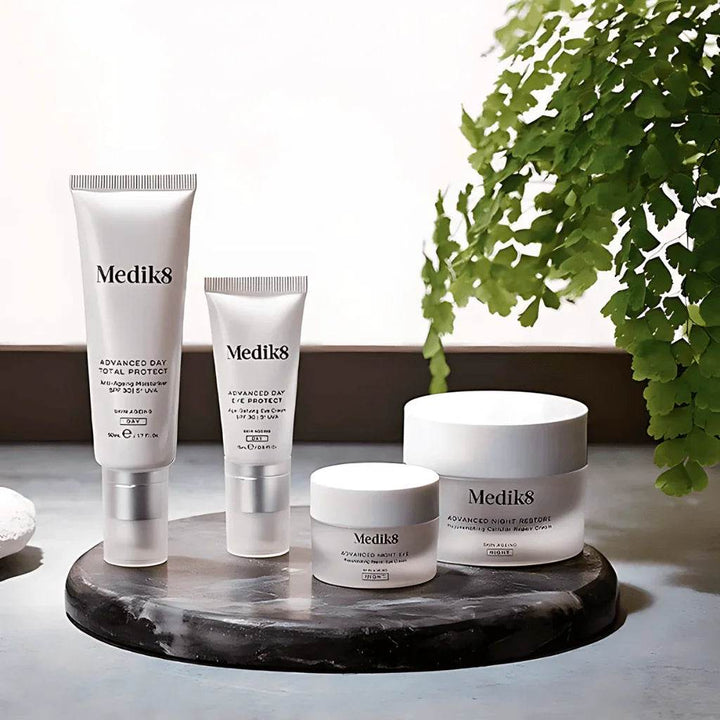Select Collections
-
Medik8 DAILY RADIANCE VITAMIN C™Regular price €81,35
-
Medik8 ADVANCED DAY ULTIMATE PROTECT™Regular price €76,95
-
Medik8 ADVANCED DAY TOTAL PROTECT™Regular price €73,65
-
Medik8 ADVANCED DAY EYE PROTECT™Regular price €60,50
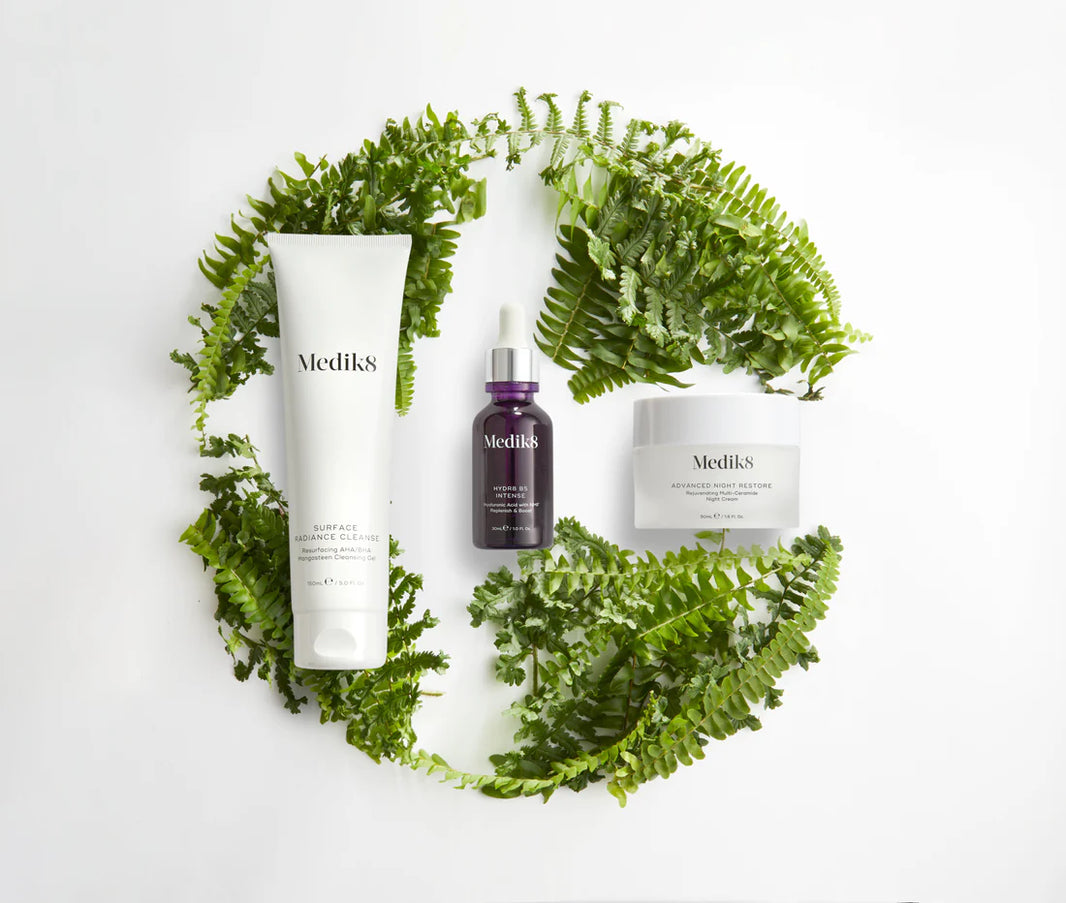
Buy Medik8 Sun Protection / SPF products | SieroSanto
Sun protection is essential for maintaining healthy skin. Medik8's SPF products provide effective protection against UV rays without weighing down the skin.
Why choose Medik8 Sun Protection?
Broad protection: Protect against both UVA and UVB rays.
Light formulas: Do not feel heavy on the skin and are ideal for everyday use.
Hydrating: Contain ingredients that hydrate the skin while protecting it.
Discover our Medik8 categories
1. Medik8 Serums and Concentrates
The power of Medik8 serums lies in their ability to target. Discover serums designed to hydrate, provide anti-aging benefits, reduce pigmentation, and more. Browse our selection of Medik8 serums now.
2. Medik8 Cleansing and Exfoliation
Healthy skin starts with proper cleansing and exfoliation. Medik8 offers a range of cleansers and exfoliants to help you achieve a radiant complexion. Browse our selection of Medik8 cleansers and exfoliants now.
3. Medik8 Moisturizers and Sun Protection
Keep your skin hydrated and protected from harmful UV rays with Medik8's hydrating and sun protection products. Discover our selection of Medik8 moisturizers and sunscreens now.
4. Medik8 Anti-Aging and Skin Rejuvenation
For those looking for anti-aging solutions, Medik8 offers a range of products that reduce the signs of aging and leave your skin looking youthful and radiant.
View our selection of Medik8 anti-aging products now.
5. Medik8 Other Products
In addition to the above categories, Medik8 offers a wide range of other products, such as those with vitamin A , vitamin C , day creams and care for redness or sensitive skin .
Explore all Medik8 products for specific skin needs.


